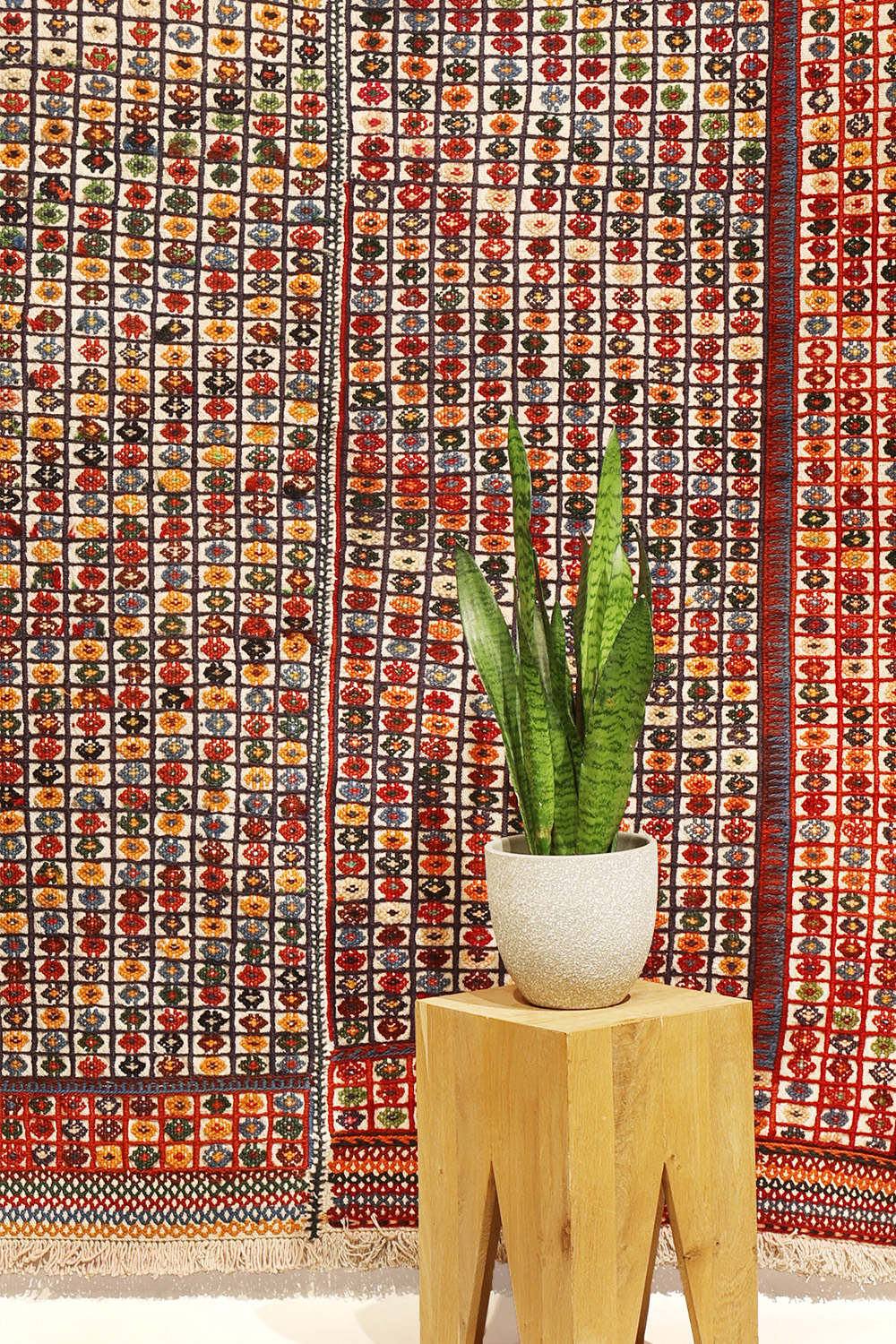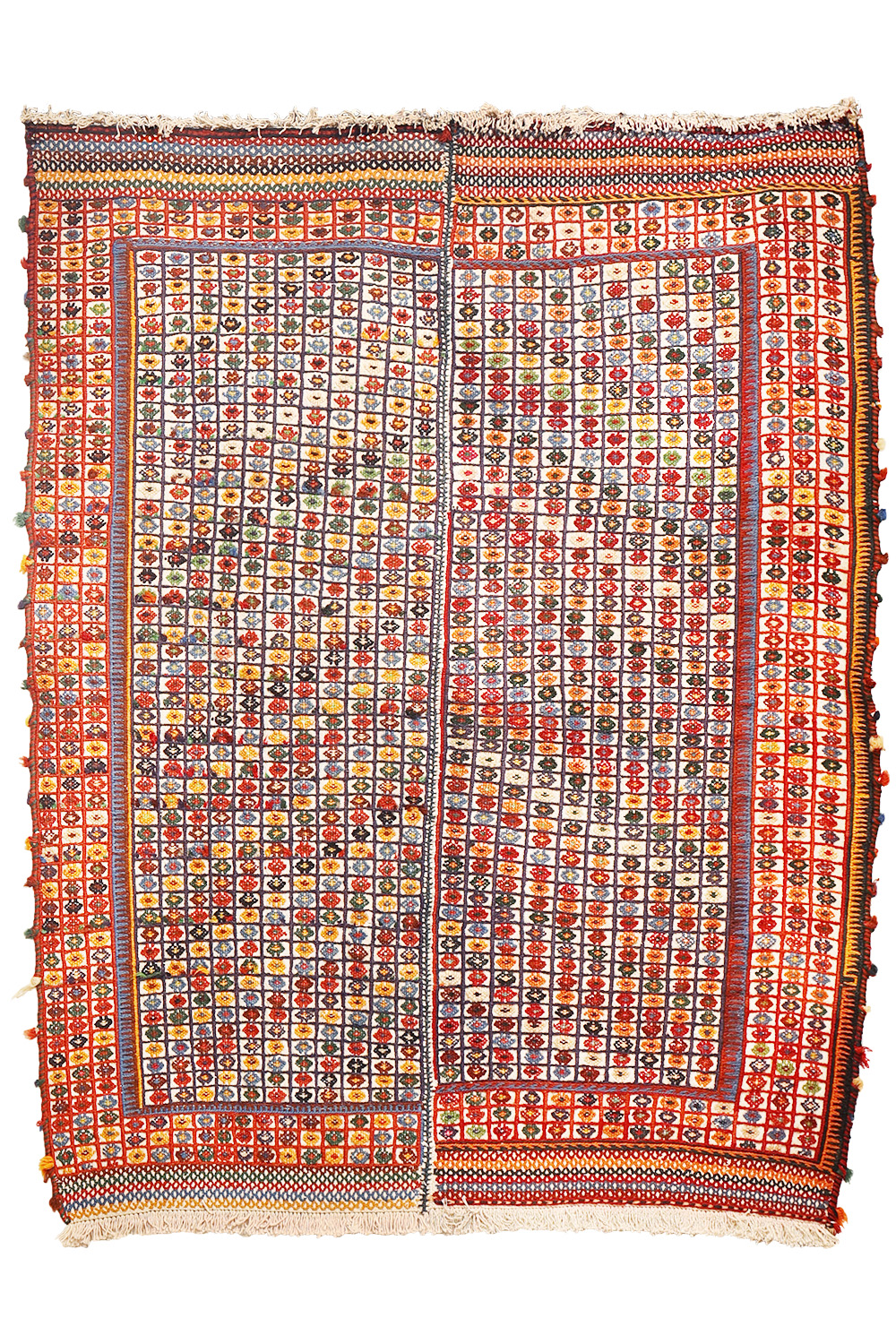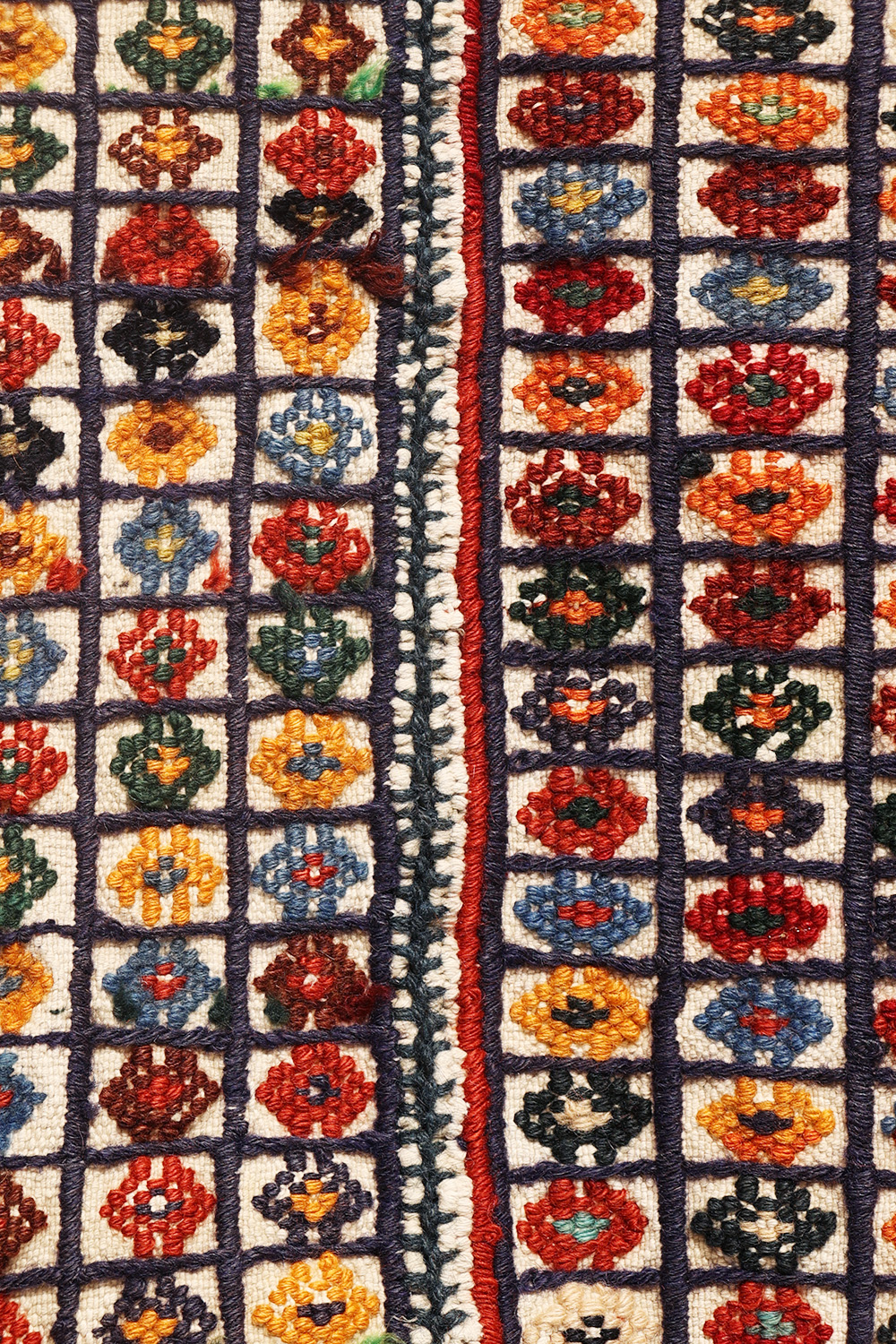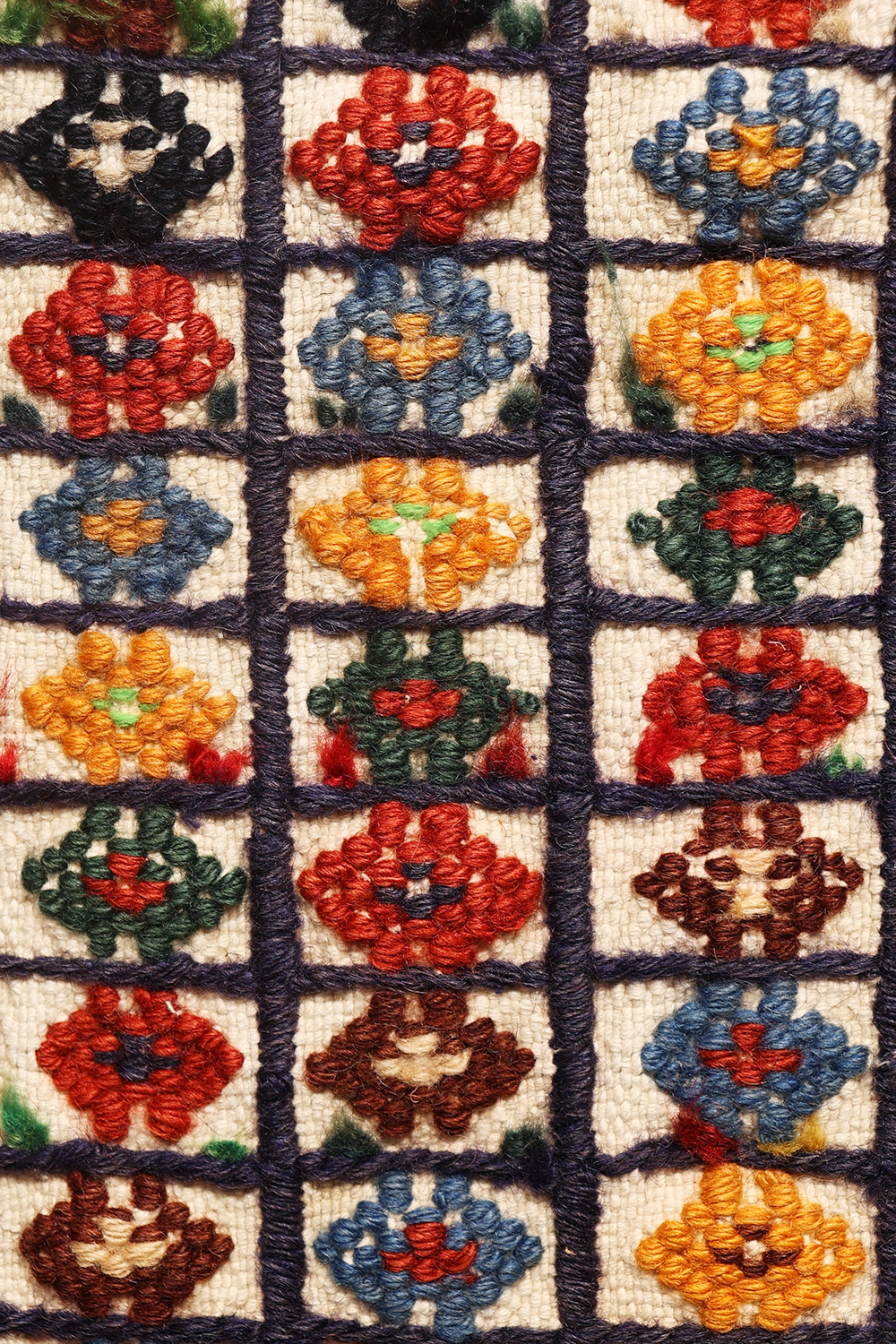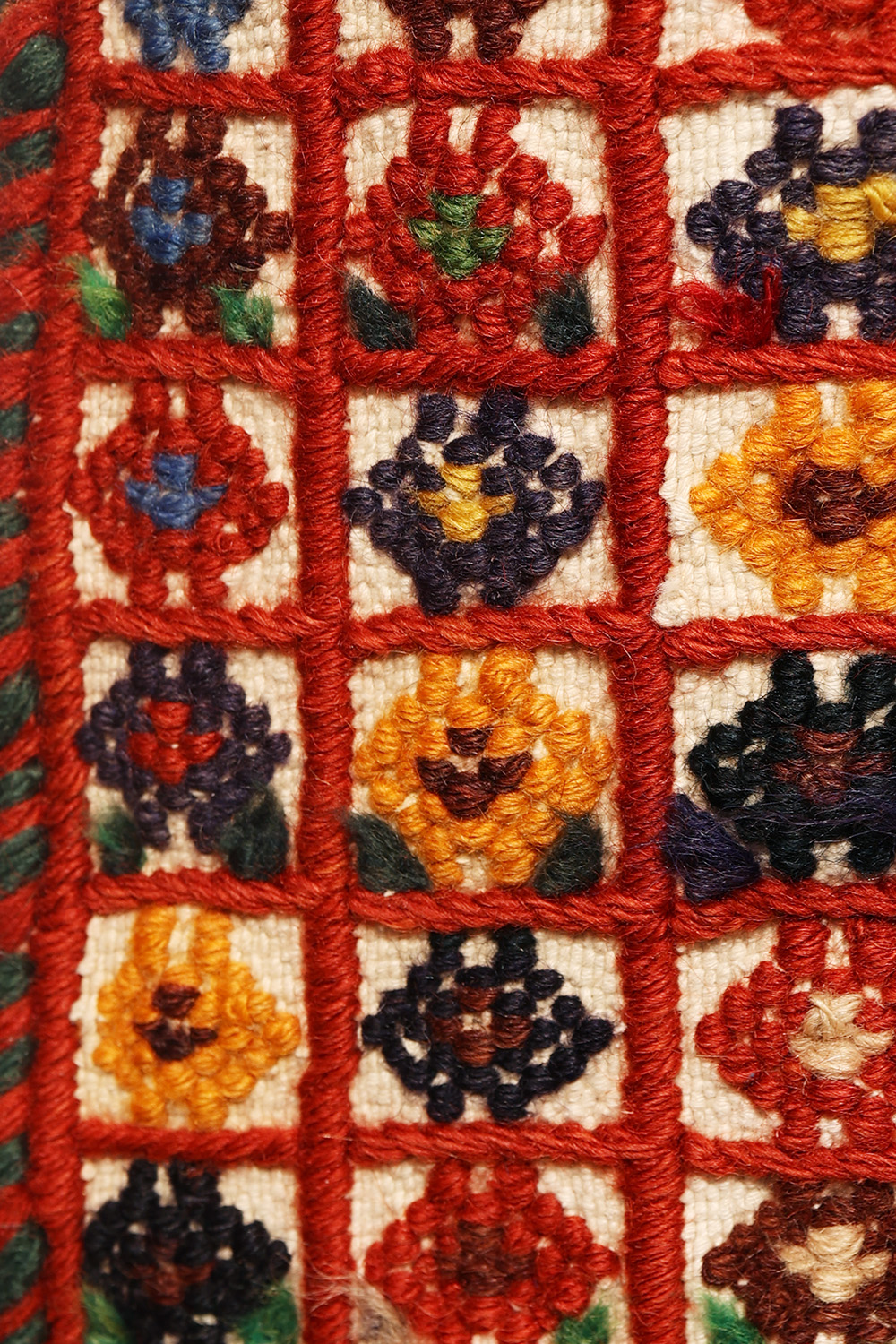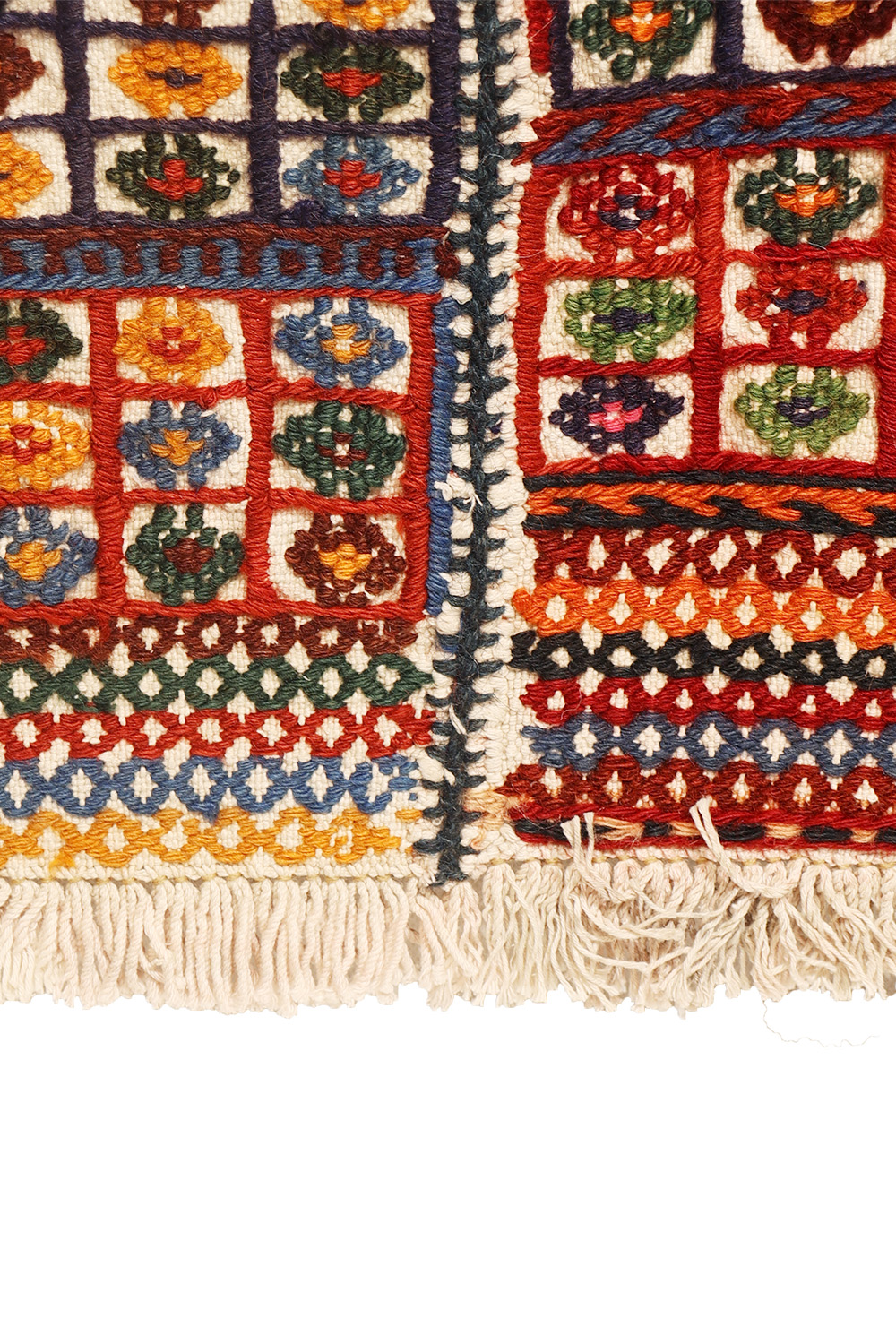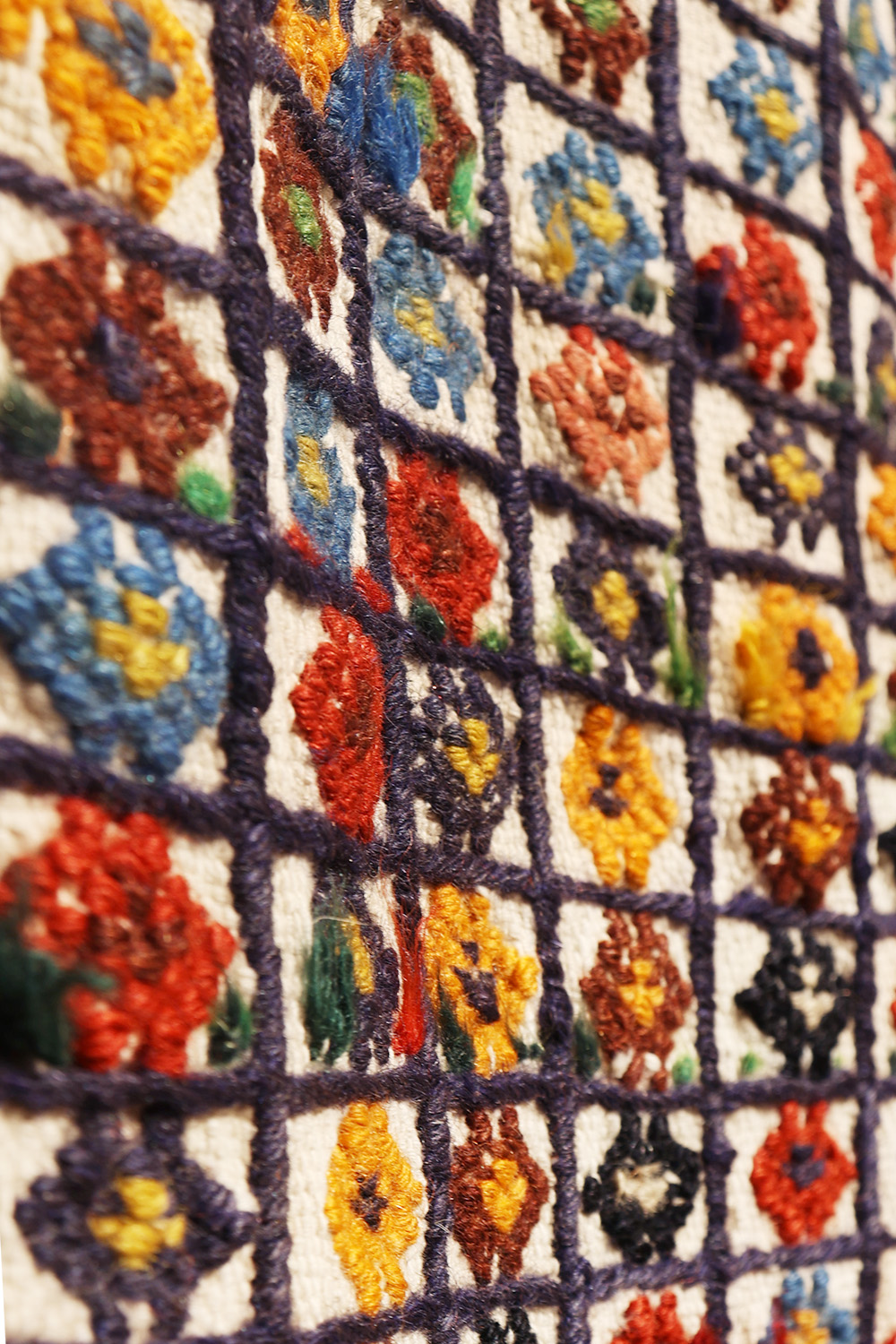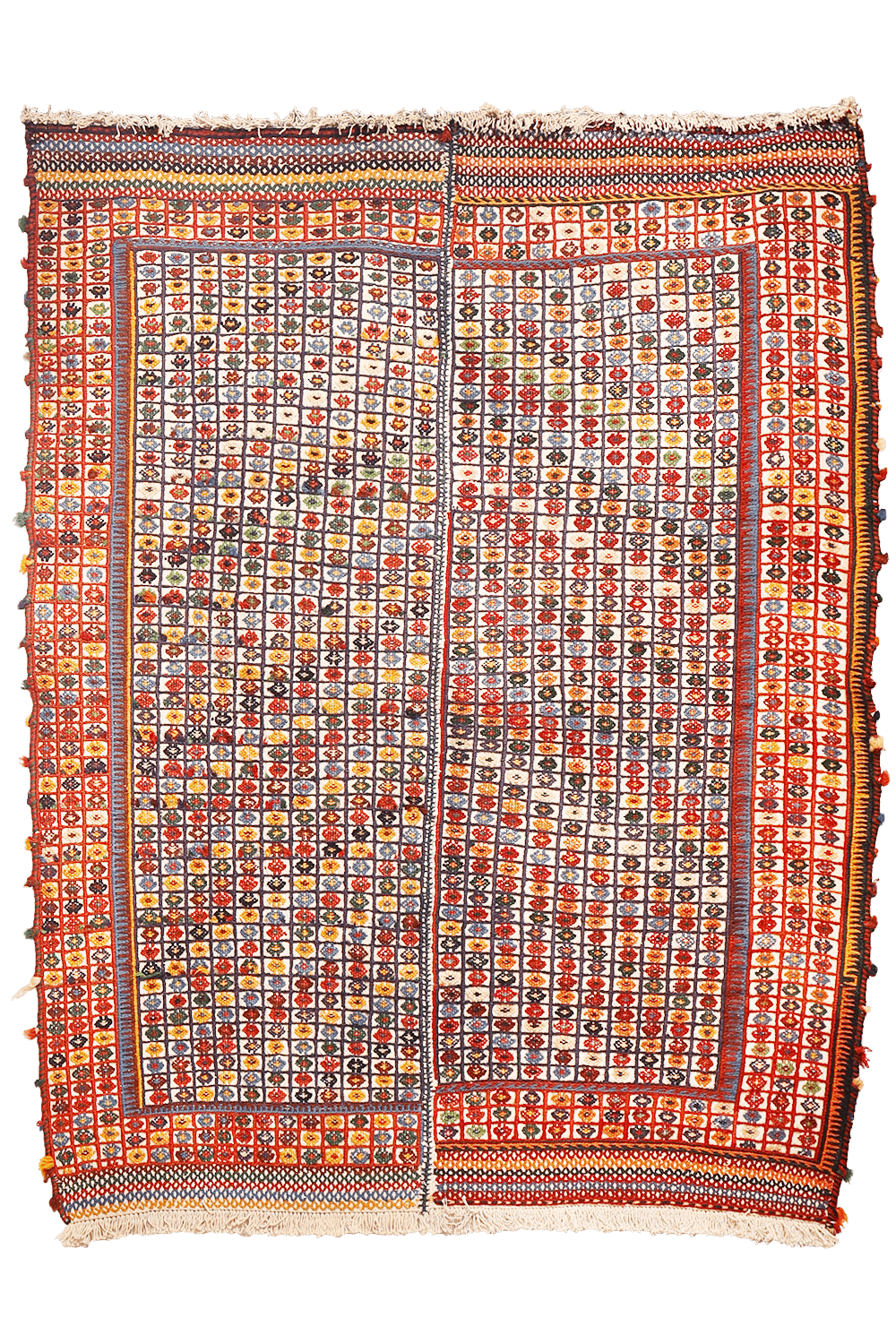850.00 €
Shiraki Kilim from Southern Iran from the 1950s
This type of kilim is known locally in southern Iran as a “shiraki”, a word that literally means “needle work” — though, interestingly, it is woven on a loom rather than sewn. Due to the limited size of the looms available to most weavers, shiraki kilims were traditionally woven in two separate panels and then meticulously joined to achieve the desired width. In this particular piece, the two halves exhibit distinct personalities and are not entirely symmetrical.
Unusually, this shiraki features a white cotton background, and the latticework has been woven with wool. The lattice design showcases a grid of diagonally arranged colorful, pretty flowers. It is also interesting to note that the grid of flowers from the main field is replicated in the border, which is uncommon since traditionally the border and the field were different.
All the dyes used in this kilim are natural. In mint condition
Material: 100% hand-spun sheep wool and cotton
Size: 195×155 cms
Origin: Arab tribe of Southern Iran
Date of weaving: 1950s
Arab nomads of Fars Province, Iran, are descended from certain Arab tribes of Najd, Yammaneh and Omman who migrated in the 7th and 8th centuries following the Arab contest (640 A.D.) and the advent of Islam. They speak a corruption of Arabic and Persian.
Althoug Arab nomad piled production encompasses a great and astonishing variety of designs, with field patterns much more varied than other tribes of Fars, the Arab weaver´s adherance to a generally dark and sober palette has denied them the artistic recognition they deserve.
1 in stock
Additional information
| Weight | 7 kg |
|---|
Subscribe and receive the lastest news
